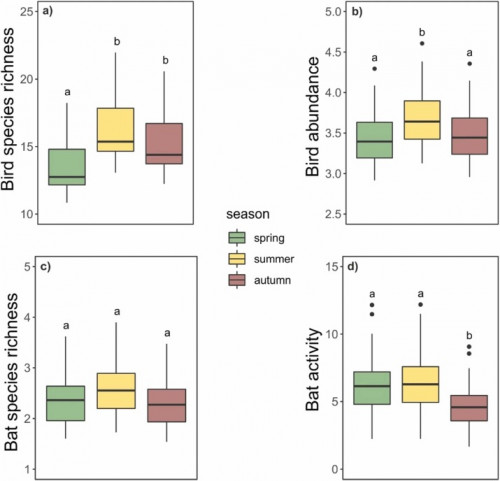A SHOWCASE co-funded study written by project partner University of Cádiz in collaboration with Mediterranean Institute for Agriculture, Environment and Development, Institute for Multidisciplinary Research in Applied Biology (IMAB) and Department of Science, CIBIO, InBIO and BIOPOLIS Program in Genomics sheds light on the impact of agricultural intensification on biodiversity, specifically focusing on olive groves in the Alentejo region of southern Portugal. As global demand for olive oil increases, farming practices have shifted towards more intensive methods, raising concerns about biodiversity loss. This research aims to understand how these intensified practices affect bird and bat species, both at the species and community levels, across different seasons.
Agricultural intensification is a major driver of biodiversity loss, yet its spatio-temporal effects on species and communities are not well understood. The study sought to address this gap by examining the seasonal impacts of olive grove intensification on birds and bats across 60 sites representing varying levels of olive grove intensification in the Alentejo region. Researchers aimed to identify the effects of local farming practices and grove structural complexity, as well as landscape-scale land-cover diversity on these two groups.
The findings revealed a negative relationship between olive grove intensification and biodiversity. Approximately 77% of the species analysed (84% of birds and 55% of bats) were negatively affected by intensification in at least one season. The Structural Index emerged as the most influential factor, especially for birds, with consistent negative effects across all seasons. Chemical applications had a stronger negative impact on birds, whereas the amount of olive grove cover more adversely affected bats. The study also highlighted that birds and bats respond differently to various intensification components depending on the season, with bats showing greater sensitivity to landscape-scale changes.
The study underscores the importance of maintaining structural complexity within olive groves to support biodiversity and its insights are crucial for designing agricultural policies that promote biodiversity conservation.
Read the full paper here.
Image: Effects of season on bird (a-b) and bat (c-d) species richness and total abundance. Different letters denote significant differences between seasons (p < 0.05). Values of variables in y-axis are the model predicted values.
